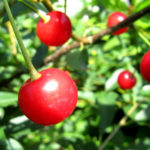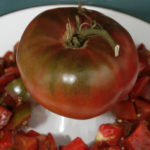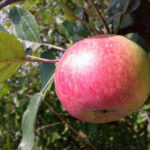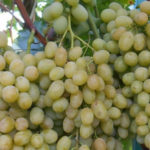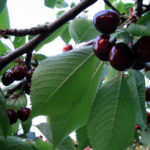Rose Lavinia (Lawinia)
Thanks to their strong shoots, climbers are quite popular with flower growers, since they can be used not only as a decorative element in the garden, but also as a cut-off species. In addition, representatives of this group are distinguished by reliable characteristics - excellent health and winter hardiness. Most of these properties are inherent in our heroine - rose Lavinia. It has excellent decorative qualities not only of flowers, but also of a shrub in general, and is considered one of the best climbing large-flowered varieties of German selection.
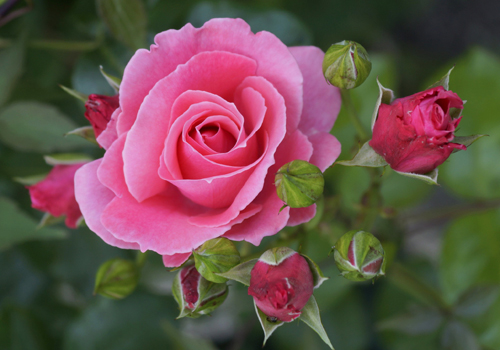
History of origin
Majestic climbers combine the benefits of floribunda with tea and remontant varieties. It is not known for certain what varieties of roses were used to create Lavinia, but all the best characteristics of the original forms are combined in it in the most dignified way. Our heroine appeared in 1980 in the Tantau rose growing company. Its creator is Mathias Tantau Jr. The name received upon registration is TANklawi. In exhibitions, the beautiful rose is presented as Lawinia, and it is also found under the name Lavinia.
Awards
Having gained wide popularity, the pink-colored beauty was awarded various awards. 1999 - Honorary award at the Syracuse Rose Society Show in the USA. In the same year, he was awarded the title of "Best Climbing Rose" at the AARS competition of the American Rose Society. In addition, the species has received the Garden Merit Award from the Royal Horticultural Society (RHS).
Description
With proper care, the culture grows quite quickly. The bush is erect, powerful, branched, tall and voluminous. Height from 200 to 300 cm, sometimes even higher. In width, a perennial takes up quite a lot of space, as it grows up to 200 cm. A feature of our heroine is the ability to grow her as a shrub. Thanks to the powerful shoots, the bush will not need support. True, many rose growers speak out about the unpredictability of a perennial, often it can show weak growth, which does not even come close to what it says. The shoots that form the basis of the shrub are very strong, young, rather flexible. The thorns are large. The foliage is good, the foliage is healthy, bright green. Leaves are alternate, leathery, semi-glossy surface. At the ends of the shoots, drooping inflorescences are formed, consisting of 2 - 3, often 7 flowers. The multi-flowered brushes are loose and heavy, but the shoots can easily hold such a load.
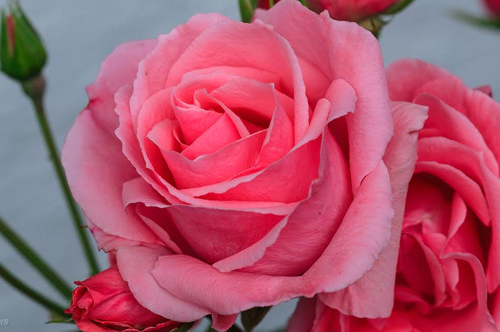
Since the inflorescences are formed at the tops of the shoots, the bottom of the bush often becomes bare. Experienced growers prune perennials in a cascade, so each level is covered with fluffy flowering brushes. Some simply tilt the branch close to the ground, thereby stimulating the formation of shoots with buds at the end along its entire length.
The buds are very elegant, not too big. The flower is beautifully cupped, relatively large, up to 9 cm in size. It is classified as double, consists of 20 - 30 beautifully arranged petals. In the process of dissolving, the petals are bent back and expose the dark center. Gardeners note that in any period of opening, the rosette of our heroine looks very elegant. Lavinia's color is deep pink, but not cold, but rather warm. The color of the petal at the base is deeper, closer to the top it becomes lighter. This color scheme is able to please both lovers of bright colors and connoisseurs of calm tones.
Bloom
Delicate beauty Lavinia belongs to the re-flowering varieties. Over a long summer period, the plant manages to form two or even three flower waves, which do not lose their decorative effect for a long time. Flowering is long (from June to the onset of cold weather), very generous, an adult well-groomed bush from below and to the top is covered with luxurious large-flowered clusters.According to reviews, the flower is not able to last very long, but a large number of flowering rosettes and growing buds ready to open, allows us to maintain the overall spectacular appearance of our heroine for a long time. The color is resistant to sunlight, the pink color does not fade, just the tips of the petals may fade. The aroma is rich, pleasant, some gardeners note sweet fruity notes in it.
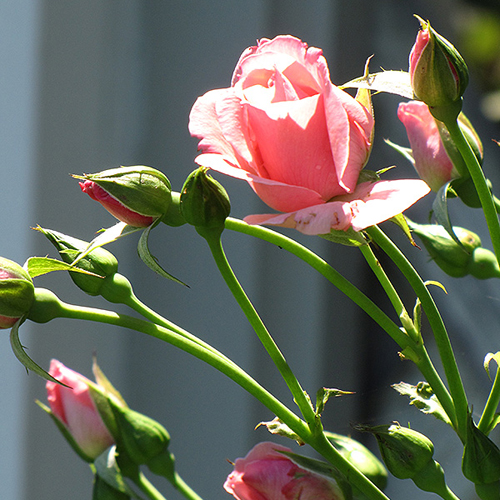
Characteristics
- According to reviews, a healthy Lavinia seedling is able to bloom in the first year after spring planting. But the real decorativeness of the rose can be estimated for 2 - 3 years;
- the variety has a good ability to adapt to adverse environmental conditions;
- high frost resistance, corresponds to 5 USDA zone (according to the system adopted by the US Department of Agriculture). An adult plant is capable of overwintering without significant damage at a temperature of minus 28.9 ° C. Such resistance to low temperatures, not quite typical for most other representatives of the culture, allows you to significantly expand the geography of the magnificent beauty. But in cool regions, you still need to use shelters, especially for young bushes;
- according to the observations of amateurs engaged in the cultivation of flowers in unfavorable regions, the pink-colored beauty, if it freezes slightly, then recovers quickly. The main thing is that freezing does not touch the vaccination site;
- the plant is tolerant to heat, the petals are quite resistant to high temperatures, they do not melt;
- resistance to rain is declared weak. But, as rose growers note, during a period of high humidity, the edges of the petals do not rot, however, they are covered with specks. But the buds, unfortunately, may not open;
- a big plus, facilitating the care of our heroine and preserving her decorative effect - high immunity. Lavinia practically does not get sick with powdery mildew and black spot even in unfavorable years. But there are still exceptions. A young and weak seedling, if planted in the wrong place and not surrounded by proper care, can not only stop growing, but also get sick;
- of the pests, aphids are the most annoying, especially during the hot season. Strong aroma can attract bronzes.
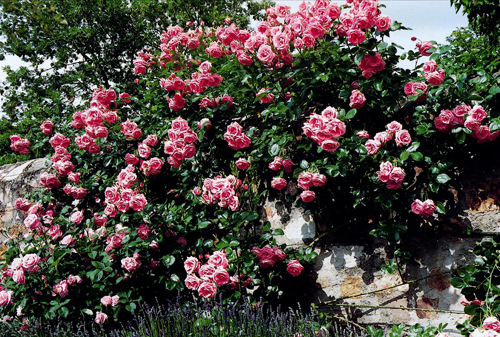
Agrotechnics
This rose can be planted in spring (late April - early May) or in autumn (from early to mid-October). Choose a plot sunny, well-warmed, with loose and fertile soils that easily pass moisture and do not impede air exchange in the roots. Loam with neutral acidity meets these requirements best of all. Lavinia loves well-timed watering, which keeps the soil in a moderately moist state. But it will not withstand stagnation of water in the roots, therefore, the groundwater at the site should run no higher than 2 m to the soil surface. The beauty does not like drafts and strong winds, especially in winter, it greatly dries up the shoots. But light airing during the growth and flowering process should be present. Thus, it will be possible to maintain normal air humidity and avoid fungal infections. In the southern regions, light partial shade will not prevent the rose at midday. The main period for trimming climbers is spring. To stimulate shoots, the lashes are cut to the first strong bud. In summer, to stimulate branching and a new wave of bud formation after flowering, the shoots are shortened by 1/3. In the fall, the bush is cut to a height of about 100 cm. Branches older than 3 years are best removed, since flowering on them worsens or is completely absent. If the winters are mild, then the perennial does not need shelter, you can only insulate the root zone. But in cooler regions, shelter is a must.
Delicate pink-colored Lavinia will surely conquer the heart of a florist with its exquisite beauty.The variety pleases with abundant and long flowering, good health will simplify care. But the rose is not in vain considered the queen of flowers, since it will not tolerate neglect. Improper agricultural technology will slow down growth and reduce the decorative effect of the shrub.
On the site, with the help of our heroine, you can create a cozy, romantic corner, due to the fact that the plant is quite easily fixed on the support and goes in the right direction. With the help of a tall perennial with beautifully drooping brushes, you can decorate any unsightly surface. Many gardeners, however, are not very satisfied with Lavinia's climbing abilities and prefer to grow it as a free growing scrub.
